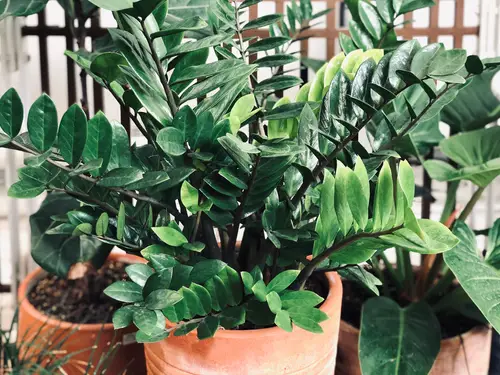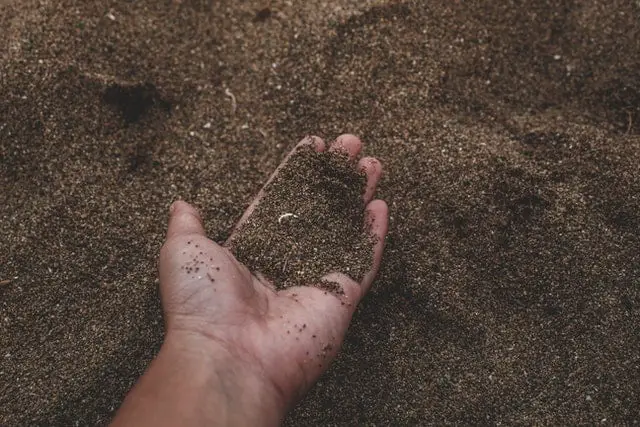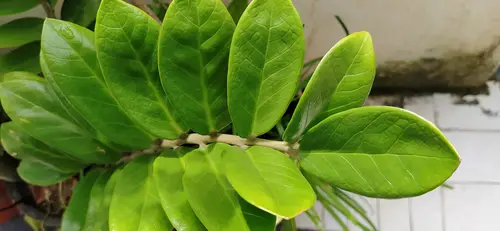ZZ plants are a popular choice for indoor plants due to their low maintenance and striking appearance. However, one common problem that ZZ plant owners may encounter is ZZ plant new growth dying.
This can be frustrating for plant owners who want to see their ZZ plants thrive, but it is a problem that can be addressed with proper care and attention.
To understand why new growth may be dying on a ZZ plant, it is important to first understand the plant itself. ZZ plants, or Zamioculcas zamiifolia, are native to Africa and are known for their ability to survive in low light and drought conditions. They have thick, waxy leaves and can grow up to three feet tall.
While they are relatively easy to care for, ZZ plants can still experience issues with new growth dying, which can be caused by a variety of factors.
Identifying the problem and its causes is key to preventing new growth from dying on a ZZ plant. While the most common cause is overwatering, other factors such as pests, root damage, and insufficient light can also contribute to new growth dying.
By understanding these causes and taking preventive measures, ZZ plant owners can ensure that their plants thrive and continue to add beauty to their indoor spaces.
Key Takeaways
- ZZ plants are low maintenance indoor plants that can experience new growth dying.
- Common causes of new growth dying include overwatering, pests, root damage, and insufficient light.
- Preventive measures such as proper watering and pest control can help ZZ plants thrive.
Learn more about plant care from these other posts:
Understanding ZZ Plant

ZZ plant, also known as Zamioculcas zamiifolia, is a popular houseplant that is native to Eastern Africa. This plant is known for its shiny, waxy leaves and its ability to thrive in low-light conditions.
ZZ plants are slow-growing plants that prefer bright, indirect sunlight. One of the benefits of ZZ plant is that it can thrive in many lighting conditions.
ZZ plants have thick, succulent stems that store water, making them a drought-tolerant plant. These stems grow from rhizomes, which are underground stems that produce new stems, bulbs, and roots. ZZ plants can grow up to three feet tall and wide, making them a great addition to any indoor space.
One of the reasons ZZ plants are so popular is because they are low maintenance and easy to care for. ZZ plants do not require frequent watering and can thrive in a variety of temperatures. However, ZZ plants are susceptible to overwatering, which can cause the leaves to turn yellow and the new growth to die.
To keep your ZZ plant thriving, it is important to understand its growth habits and care requirements. ZZ plants prefer to be kept on the dry side and should be watered only when the top inch of soil is dry to the touch. Overwatering can cause root rot and lead to the death of the plant.
Identifying the Problem
When ZZ plants start to show signs of new growth dying, it can be a cause for concern for plant owners. ZZ plants are known for their resilience and are generally easy to care for, but they can still experience issues that lead to new growth dying. Identifying the problem is the first step in addressing the issue and saving the plant.
One of the most common signs of a problem with ZZ plants is yellowing leaves. If the new growth on the plant is turning yellow, it may be an indication of overwatering or underwatering.
ZZ plants prefer to be watered once a week and like their soil to dry out completely between waterings. If the soil is always damp or the plant is being watered too frequently, it can lead to root rot and cause the new growth to die.
Another common issue with ZZ plants is drooping or wilting leaves. This can be a sign of underwatering or overwatering, as well as issues with lighting. ZZ plants prefer bright, indirect light, and if they are not getting enough light, the new growth may start to droop and die.
Brown tips on new growth can also be a sign of a problem with ZZ plants. This can be caused by a variety of issues, including underwatering, overfertilizing, or exposure to dry air. Black spots on stems can also be a sign of a fungal or bacterial infection, which can cause the new growth to die.
If the bulbs or rhizomes of the ZZ plant are rotting, it can cause the new growth to die. This can be caused by overwatering or exposure to cold temperatures. Additionally, if the plant is leaning or leggy, it may be an indication that it is not getting enough light.
ZZ Plant New Growth Dying – 6 Common Problems

New growth dying on a ZZ plant can be a frustrating problem for plant owners. There are several factors that can contribute to this issue, and it’s important to identify the cause so that you can take the appropriate steps to remedy the situation.
1. Overwatering
Overwatering is one of the most common causes of new growth dying on a ZZ plant. ZZ plants prefer to be watered about once a week, and they like their soil to be allowed to dry out completely between waterings. If the soil is always damp, it could be causing your plant to rot.
2. Underwatering
On the other hand, underwatering can also cause new growth to die. ZZ plants need to be watered regularly, and if they don’t receive enough water, they may become dehydrated and start to wilt. Make sure to water your ZZ plant consistently, but avoid overwatering as well.
3. Sunlight
ZZ plants prefer bright, indirect light. Too much direct sunlight can scorch the leaves and cause them to turn yellow or brown. If your ZZ plant is not getting enough light, it may not be able to produce new growth effectively.
4. Humidity
ZZ plants prefer moderate to high humidity levels. If the air is too dry, the leaves may start to curl or brown at the edges. Consider using a humidifier or placing a tray of water near your plant to increase the humidity.
5. Soil and Fertilizer
ZZ plants prefer well-draining soil and should be fertilized occasionally with a quality liquid fertilizer. Overfertilization or using too much fertilizer can cause salts to build up in the soil, which can be toxic to the plant. Make sure to follow the instructions on the fertilizer package and avoid fertilizing your plant too often.
6. Root Damage and Disease
Root damage or disease can also cause new growth to die. Make sure your ZZ plant is not root-bound, and that there is adequate drainage in the pot. If you suspect root damage or disease, inspect the roots carefully and consider repotting your plant in fresh soil.
By identifying the cause of new growth dying on your ZZ plant, you can take the appropriate steps to remedy the situation and help your plant thrive.
Preventive Measures and Solutions

To prevent ZZ plant new growth from dying, it is important to provide proper care and attention. ZZ plants prefer to dry out between waterings, so overwatering should be avoided.
The soil should be allowed to dry out completely before watering again. When watering, it is important to use water that is free of chlorine and fluorine, as these chemicals can harm the plant.
Lighting conditions also play a crucial role in the health of ZZ plants. They prefer bright, indirect light and should be kept out of direct sunlight. If the plant is not growing new leaves, it may be due to insufficient light exposure. Moving the plant to a brighter location may help to promote new growth.
Repotting ZZ plants can also help to prevent new growth from dying. If the plant has outgrown its current pot, it may become root-bound, which can cause stress and limit growth. Repotting into a larger pot with fresh soil can provide the plant with the necessary space and nutrients to thrive.
Neglect can also lead to new growth dying. ZZ plants should be regularly inspected for signs of stress or damage. If any issues are identified, they should be addressed promptly to prevent further damage.
To promote healthy new growth, it is important to provide the proper texture and size of soil. ZZ plants prefer a well-draining soil mix that is slightly acidic. A mix of peat moss, perlite, and sand can provide the necessary texture and drainage for the plant to thrive.
If saucers are used to catch excess water, they should be emptied regularly to prevent the plant from sitting in standing water, which can lead to root rot. If a ZZ plant is already experiencing issues with new growth dying, there are solutions that can help. Identifying the underlying cause of the issue is the first step.
Common solutions include adjusting watering practices, providing proper lighting conditions, repotting, and addressing any issues with soil texture or nutrient deficiencies.
Frequently Asked Questions

How do you encourage new growth on a ZZ plant?
To encourage new growth on a ZZ plant, ensure that it is receiving adequate bright, indirect light, and that the soil is well-draining.
ZZ plants prefer to be slightly root-bound, so avoid repotting too often. Fertilize the plant during the growing season with a balanced fertilizer, and avoid overwatering.
What does a dying ZZ plant look like?
A dying ZZ plant may exhibit yellowing leaves, shriveled stems, drooping leaves, brown tips, and scorched leaves. If you notice any unusual change in your plant, it is a good idea to investigate. Small signs are often ignored, but these can lead to wilting of your ZZ plant.
Can I save a dying ZZ plant?
Yes, you can save a dying ZZ plant. The first step is to identify the problem, such as overwatering, root rot, or insufficient light.
Once you have identified the issue, take corrective action, such as adjusting watering habits, repotting, or providing more light. ZZ plants are resilient, and with proper care, they can recover.
What does ZZ plant root rot look like?
ZZ plant root rot is characterized by brown, mushy roots that may have a foul odor. The leaves may also turn yellow and wilt, and the plant may appear stunted. To prevent root rot, ensure that the soil is well-draining and that the plant is not overwatered.
How do you revive a dying ZZ plant?
To revive a dying ZZ plant, first identify the problem. If the plant is overwatered, reduce watering and improve drainage. If the plant is not receiving enough light, move it to a brighter location.
If the roots are rotting, repot the plant in fresh, well-draining soil. ZZ plants are hardy and can recover with proper care.
Why are my ZZ plant leaves turning brown and yellow?
ZZ plant leaves may turn brown and yellow due to a variety of factors, including overwatering, underwatering, insufficient light, and pest infestations.
To determine the cause, examine the plant and soil closely. Adjust watering habits and provide more light as needed. If pests are present, treat the plant with an appropriate pesticide.

Hey, I’m Lisa and I’ve been an avid gardener for over 30 years. I love writing, talking and living in the garden! Feel free to connect with me on my socials below


